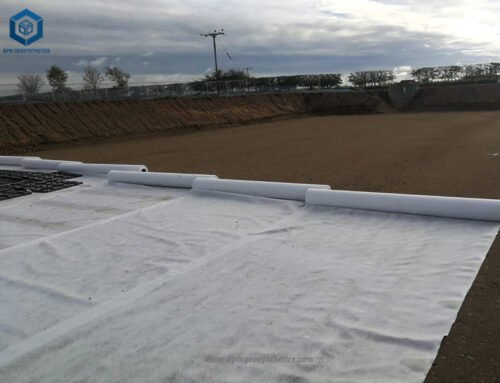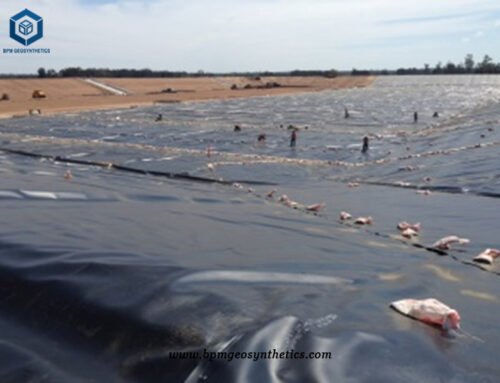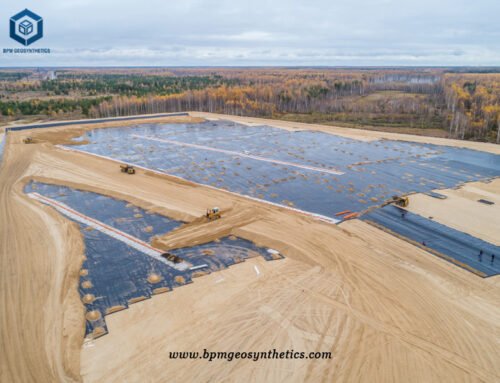Filament nonwoven geotextile fabric is composed of continuous fibers, which are combined by non-woven technology to form a tough and flexible geosynthetic material, which is widely used in civil engineering and soil protection. The fibrous structure of Filament nonwoven geotextile fabric forms many fine pores, which can effectively filter and drain water. By using this material, the loss of soil particles is prevented while allowing moisture and air to pass through, maintaining soil stability. Filament nonwoven geotextile fabric also has high tensile strength and durability, can effectively disperse the force exerted on it, and provide soil reinforcement and support. The durability of this material allows it to maintain stability and performance under various environmental conditions, such as resistance to UV radiation, chemicals and biodegradation.
Filament nonwoven geotextile fabric is widely used as soil protection layer for controlling soil erosion and soil erosion. By laying the material on the bare soil surface, it can effectively reduce the water flow velocity, prevent the loss of soil particles, and protect the soil quality and the sustainability of farmland. Filament nonwoven geotextile fabric is also used in soil filtration and drainage systems, and can be applied in underground drainage pipes, ditches and geomembrane systems to filter and drain water, prevent water accumulation in the soil, and provide drainage paths. Filament nonwoven geotextile fabric is also used in soil stabilization and civil engineering projects. It can be used as a soil reinforcement layer to increase the tensile strength and stability of the soil. The material is widely used in projects such as roads, railways and embankments to provide soil stabilization and strengthen structures.

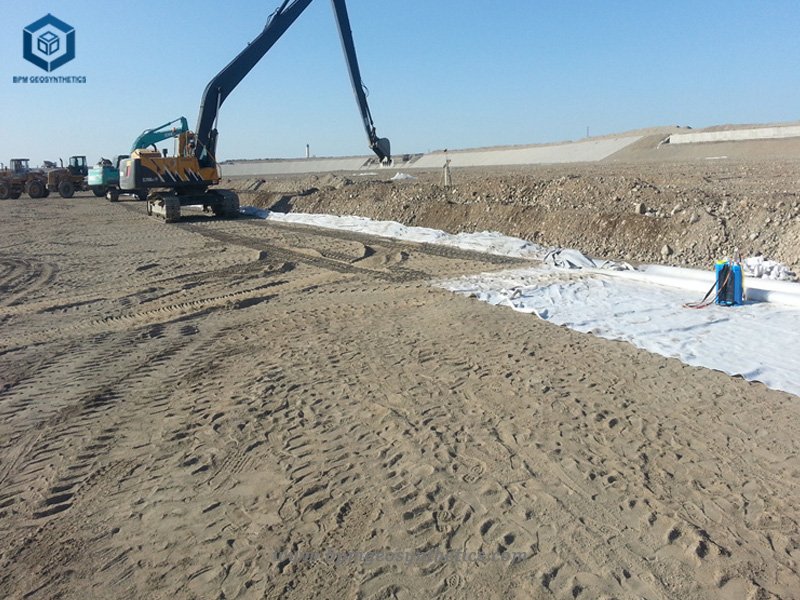
Issue
The highway’s route passes through deep soft soils in northern New South Wales often contained extensive floodplains. Soft soil was an important design consideration for road construction project and required special attention to the design team. Soft soil is characterized by high water content, low water permeability and low strength. Without effective handling and management, highways can sink and crack.
A solution that can strengthen the soil was needed. After research, the technical team of the contractor asked BPM Geosynthetics’ engineering team to seek suitable specifications of PET filament nonwoven geotextile fabric to reinforce the roadbed to improve the strength and water permeability of the roadbed.
Solution
Polyester geotextile fabric is a commonly used geotechnical material, which is widely used in road construction. It has good tensile strength, durability and anti-penetration performance, which can effectively increase the stability and bearing capacity of the soil, and prevent soil erosion and hydrological problems.
During a road construction project in northern New South Wales, due to poor geological conditions and poor soil stability, reinforcement of the road subgrade was required. The construction party used polyester filament nonwoven geotextile fabric for reinforcement works.
Specifications of Filament Nonwoven Geotextile Fabric for Road Construction in Australia
- Product: PET Filament Nonwoven Geotextile
- Specification: 300 gsm
- Roll size: 5.8m×100m
- Quantity: 80000 square meters
Preparatory work. First, clean and level the roadbed to remove surface debris and unstable soil layers. Then, a layer of sand of the appropriate thickness is laid over the area to be reinforced to increase the uniformity and support of the base.
Laying geotextiles. Lay polyester filament nonwoven geotextile fabric on the surface of the roadbed, unfold them and fix them on the roadbed. The selection of geotextiles should be determined according to the actual situation, including the selection of appropriate specifications, tensile strength and pore size and other parameters. Construction personnel need to ensure that the geotextile is neat and straight to avoid wrinkles and overlaps.
Fixing and connection. The nonwoven geotextile fabric needs to be fixed on the roadbed with nails or other fixtures to ensure that it fits tightly and is firmly fixed. If it is necessary to cover a large area of roadbed, multiple geotextiles can be connected to achieve seamless connection to improve the overall reinforcement effect.
Soil covering and compaction. Cover a layer of sand or other suitable fillers with an appropriate thickness on top of the geotextile, and then carry out compaction treatment. This can increase the bearing capacity of the subgrade and prevent the geotextile from being exposed and damaged by the external environment.
BPM nonwoven nonwoven geotextile fabric are made by extrusion of fibers, which are entangled by needling and produce a dimensionally stable product. These nonwoven geotextiles are often best suited for a variety of geotechnical applications including drainage, filtration, protection and separation.
By using polyester filament nonwoven geotextile fabric for roadbed reinforcement, the stability and bearing capacity of the roadbed can be effectively improved, the risk of roadbed settlement and damage can be reduced, and the service life of the road can be extended. In addition, geotextiles can also provide certain waterproof and anti-penetration functions, reducing the impact of hydrological problems on the roadbed. This provides an important guarantee for the safety and reliability of road traffic.
BPM Geosynthetics can provide advice on soft soil reinforcement, as well as solutions for embankments, slopes, piles, walls and pavements.
With BPM Geosynthetics engineering expertise and a range of specialist geosynthetic products, we can provide cost-effective solutions for many different applications.
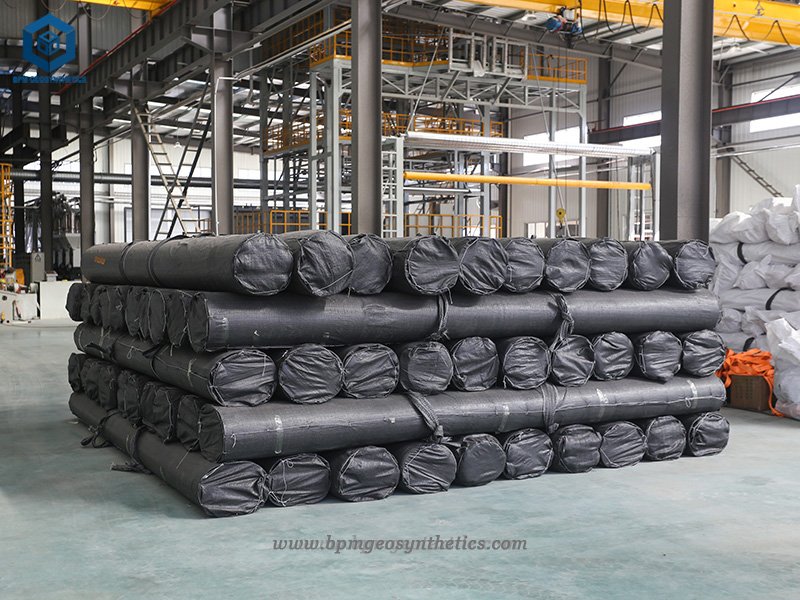
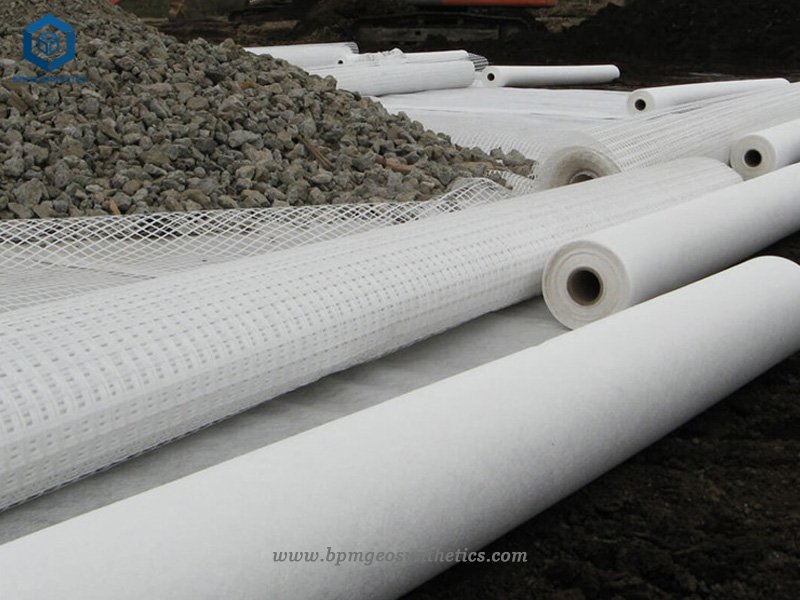
Advantage of Filament Non Woven Geotextile Fabric
BPM polyester filament nonwoven geotextile fabric is made by the method of polyester filament forming and consolidating, its fibers are arranged into a three-dimensional structure, it is a new type of building material in geotechnical engineering and civil engineering applications, in addition to having good tensile strength In addition to the characteristics of mechanical strength such as anti-puncture and puncture resistance, it also has good vertical and horizontal drainage performance and good elongation performance, as well as good chemical functions such as high biological resistance, acid and alkali resistance, and aging resistance. Polyester filament geotextile also has a wide pore size range, tortuous pore distribution, good permeability and filtration performance.
Polyester filament geotextiles offer several advantages in road construction projects, including:
- Strength and stability: Polyester filament nonwoven geotextile fabric has high strength and stability, and can effectively resist surface loads and traffic loads. It can enhance the tensile strength and shear strength of the soil, and improve the stability and bearing capacity of the roadbed.
- Soil filtration and drainage capacity: The pore structure of the nonwoven geotextile fabric can filter and separate soil particles to prevent the loss and erosion of particles. It also promotes drainage of the soil, preventing moisture buildup and softening of the roadbed.
- Prevent soil erosion: Polyester filament geotextiles can effectively control soil erosion. It stabilizes the soil surface and prevents wind and water erosion from occurring. It also prevents subgrades and slopes from collapsing and sliding, protecting the structural integrity of roads.
- Water permeability and air permeability: Geotextiles usually have water permeability and air permeability, allowing water and gas to pass freely between the geotextile and the soil. This helps maintain the soil’s moisture balance and aeration, preventing moisture buildup and problems caused by soggy soil.
- Durability and corrosion resistance: Polyester filament geotextile has high durability and corrosion resistance. It can resist ultraviolet radiation, chemical corrosion and biodegradation for a long time, prolonging the service life of the road.
To sum up, the advantages of polyester filament nonwoven geotextile fabric in road construction projects include strength and stability, soil filtration and drainage capabilities, prevention of soil erosion, water permeability and air permeability, as well as durability and corrosion resistance. This makes it a reliable and effective material for improving the quality and sustainability of highways.
About BPM
BPM has been specializing in delivering one stop geosynthetics products and solutions to worldwide customers since its foundation in 2007. BPM had provided many types of effective and state of the art geomembranes, geotextiles, geocells, geosynthetic clay liners (GCLs), drainage boards, geogrids to over 81 countries. Our main customers are from Australia, France, Sweden, UK, Hong Kong, Hungary, New Zealand, Poland, Mexico, Ecuador, Brazil, Pakistan, Bangladesh, Thailand, Vietnam, Malaysia, Indonesia, Singapore, Philippines, Sri Lanka, India, UAE, Saudi Arabia, Qatar, Kenya, Ghana, Ethiopia, Somalia, Nigeria, South Africa, Swaziland, Mongolia, etc.
BPM is not only manufacturing best quality geosynthetic products but also providing professional design and installation service. OEM, ODM, custom development and fabrication are also available. If you have any questions or inquiries, please fill and submit the following form, we will reply as soon as possible.


